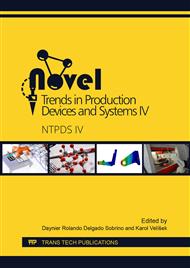p.175
p.182
p.190
p.199
p.207
p.215
p.222
p.230
p.236
Graphene Growth by Transfer-Free CVD Method Using Cobalt/Nickel Catalyst Layer
Abstract:
Graphene has been long considered for application in electronics manufacturing due to its extraordinary electronic, mechanical and thermal properties. This paper focuses on the graphene preparation onto dielectric substrate using transfer-free chemical vapour deposition (CVD) method with an intermediate catalytic metal layer (cobalt, nickel). Graphene layers were formed via segregation mechanism at temperatures in the range of 850 - 1050 °C onto the metal-dielectric boundary. Evaluated Raman spectra, which reveal the number of graphene layers and their defectivity suggested, that thinner metal layer and balanced ratio of H2:CH4 yield the best results for both cobalt and nickel layer. Spectra showed low amount of defects and the average number of carbon layers between 2-3, however, single-layer graphene (SLG) samples were also prepared. Scanning electron microscopy images showed that graphene domains on larger scale are not fully continuous.
Info:
Periodical:
Pages:
207-214
Citation:
Online since:
April 2018
Authors:
Keywords:
Price:
Сopyright:
© 2018 Trans Tech Publications Ltd. All Rights Reserved
Share:
Citation:


